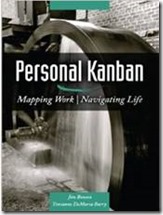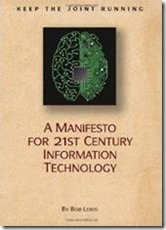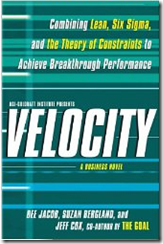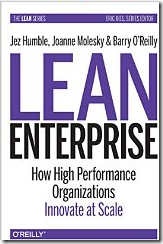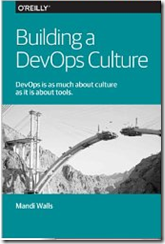More Top 10 DevOps Books for Operations
The May 2014 list got quite a bit of attention. The comment section contains additional recommendations and great suggestions. Here’s an update to the existing list* – in no particular order and very subjective.
And since a list like this never ever contains the right books, please share your favorite reads in the comments section below.
Personal KanbanMachines need to be productive. People need to be effective. Productivity books focus on doing more, Jim and Tonianne want you to focus on doing better. Personal Kanban is about choosing the right work at the right time. Recognizing why we do the things we do. Understanding the impact of our actions. Creating value - not just product. For ourselves, our families, our friends, our co-workers. For our legacy. Personal Kanban takes the same Lean principles from manufacturing that led the Japanese auto industry to become a global leader in quality, and applies them to individual and team work. Personal Kanban asks only that we visualize our work and limit our work-in-progress. |
|
Why Plans Fail: Why Business Decision Making is More than Just BusinessBusiness runs on decisions. Business relies on estimates, plans, and projections - and we all know how accurate they tend to be. Careers are made, careers are broken based on perceived accuracy in estimation and planning. But what if the successes and failures of these projects were not based on the prowess of those making the plans? What if successes and failures were instead the result of a more complex set of events? What if our own cognitive biases - our own brains - were creating our inaccuracies, our poor assumptions, and our unreasonable expectations? Why Plans Fail directly addresses our ability to plan, to forecast, and to make decisions. |
|
Keep the Joint Running: A Manifesto for 21st Century Information TechnologyKeep the Joint Running: A Manifesto for 21st Century Information Technology (aka the KJR Manifesto) radically redefines how IT should operate, in 13 highly practical, straightforward chapters. The KJR Manifesto debunks much of the long-held conventional wisdom ... such as the importance of treating end-users as "internal customers" and the desirability of running IT as a business ... that have encouraged working CIOs to isolate IT from the rest of the enterprise. It provides more sophisticated ways to approach what is usually handled simplistically - subjects like "best practices," process optimization, and metrics. And it demonstrates how human factors deserve more attention than any others for IT leaders ... and for that matter, for all business leaders ... who are serious about wanting to run high-performance organizations. |
|
Velocity: Combining Lean, Six Sigma and the Theory of Constraints to Achieve Breakthrough PerformanceMillions of readers remember The Goal, the landmark business novel that sets forth by way of story the essential principles of Eliyahu Goldratt's innovative methods of production. Now, from the AGI-Goldratt Institute and Jeff Cox, the same creative writer who co-authored The Goal, comes VELOCITY, the book that reveals how to achieve outstanding bottom-line results by integrating the world's three most powerful continuous improvement disciplines: Lean, Six Sigma, and Goldratt's Theory of Constraints.
|
|
Lean Enterprise: How High Performance Organizations Innovate at ScaleHow well does your organization respond to changing market conditions, customer needs, and emerging technologies when building software-based products? This practical guide presents Lean and Agile principles and patterns to help you move fast at scale—and demonstrates why and how to apply these methodologies throughout your organization, rather than with just one department or team. Through case studies, you’ll learn how successful enterprises have rethought everything from governance and financial management to systems architecture and organizational culture in the pursuit of radically improved performance. Adopting Lean will take time and commitment, but it’s vital for harnessing the cultural and technical forces that are accelerating the rate of innovation. |
|
Drop the Pink Elephant: 15 Ways to Say What You Mean...and Mean What You Say"[Drop the Pink Elephant]...tackle[s] every aspect of personal communication in a crisp, entertaining style." THE PLAIN ENGLISH SOCIETY "There can be no whitewash at the White House." (Richard Nixon). These nine words turned the American nation against their President. Why? Because people hadn't linked the White House with a cover up until Nixon himself made the connection. His own denial created the story. It is perhaps the most famous Pink Elephant in history. But what exactly is a 'Pink Elephant'? Pink Elephants are the unnecessary negatives that clutter your conversation and meaning, sending out the wrong signals to anyone you communicate with. |
|
Our Iceberg Is Melting: Changing and Succeeding Under Any ConditionsMost of the denizens of the Antarctic penguin colony sneer at Fred, the quiet but observant scout who detects worrying signs that their home, an iceberg, is melting. Fred must cleverly convince and enlist key players, such as Louis, the head penguin; Alice, the number two bird; the intractable NoNo the weather expert; and a passle of school-age penguins if he is to save the colony. Their delightfully told journey illuminates in an unforgettable way how to manage the necessary change that surrounds us all. Simple explanatory material following the fable enhances the lasting value of these lessons. Our Iceberg Is Melting is at once charming, accessible and profound; a treat for virtually any reader. |
|
A Sense of UrgencyMost organizational change initiatives fail spectacularly (at worst) or deliver lukewarm results (at best). In his international bestseller Leading Change, John Kotter revealed why change is so hard, and provided an actionable, eight-step process for implementing successful transformations. The book became the change bible for managers worldwide. Now, in A Sense of Urgency, Kotter shines the spotlight on the crucial first step in his framework: creating a sense of urgency by getting people to actually see and feel the need for change. Why focus on urgency? Without it, any change effort is doomed. Kotter reveals the insidious nature of complacency in all its forms and guises. |
|
Building a DevOps CultureDevOps is as much about culture as it is about tools When people talk about DevOps, they often emphasize configuration management systems, source code repositories, and other tools. But, as Mandi Walls explains in this Velocity report, DevOps is really about changing company culture—replacing traditional development and operations silos with collaborative teams of people from both camps. The DevOps movement has produced some efficient teams turning out better products faster. The tough part is initiating the change. This report outlines strategies for managers looking to go beyond tools to build a DevOps culture among their technical staff. |
|
Leading Digital: Turning Technology into Business TransformationIf you think the phrase “going digital” is only relevant for industries like tech, media, and entertainment—think again. In fact, mobile, analytics, social media, sensors, and cloud computing have already fundamentally changed the entire business landscape as we know it—including your industry. The problem is that most accounts of digital in business focus on Silicon Valley stars and tech start-ups. But what about the other 90-plus percent of the economy? |
Have fun
* All references are to the Amazon bookstore
Comments
- Anonymous
January 01, 2003
The comment has been removed - Anonymous
March 10, 2015
The comment has been removed
